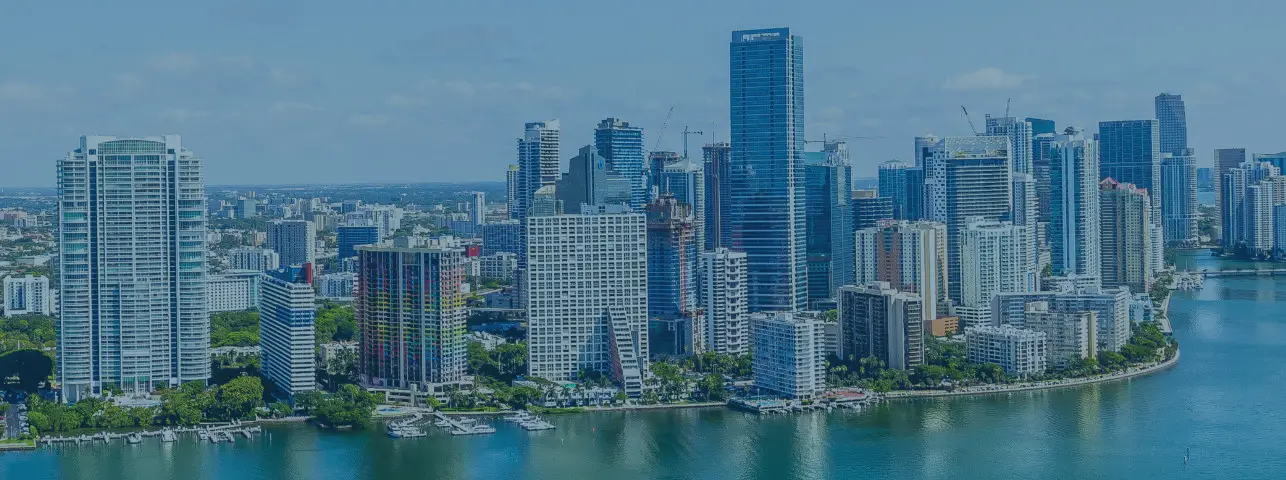Getting injured in an accident can be devastating and serious. When you are injured because of someone else’s carelessness, the situation may seem unfair and hopeless. However, you may be able to file a personal injury claim to receive financial compensation for what has happened to you.
One of the biggest predictors of success or failure in a personal injury claim is hiring a personal injury lawyer with experience and drive. The legal system can make it extremely complicated to pursue a personal injury claim, and you do not want your claim to be thrown out on a technicality before your argument is even considered.
If you or a loved one have been injured in a car accident, truck crash, or another incident that wasn’t your fault, contact the Texas car accident lawyers at Zinda Law Group today for a free case consultation.
Free Consults24/7
Send Request NowCommon Types of Personal Injury Accidents in Texas
Any time someone is injured by the actions of another, there is the possibility of a personal injury claim.
Some types of accidents can occur with or without liability, such as a car accident resulting from a patch of ice on the road, where the defendant will argue that spinning on the ice was inevitable, and the plaintiff will argue that the driver could have prevented the accident, perhaps by driving more slowly or paying more attention to the road.
There are also negligence per se cases in which the court has decided that a behavior automatically makes one party responsible for an accident, such as drunk driving. Some of the most common causes of personal injury cases include:
- Car accidents
- Truck accidents
- Motorcycle accidents
- Bicycle accidents
- Bus accidents
- Slip and falls
- Gas explosions
- Premises liability accidents
- Drunk driving accidents
- Rideshare accidents
- Pedestrian accidents
- Wrongful death
- Workplace accidents
- Dog bites
If you’ve been injured in one of the accidents listed above, you’ll want to reach out to a personal injury lawyer from Texas. They’ll be able to provide the compassionate advice and aggressive representation you need to recover from your injuries.
 What to Do After a Texas Personal Injury Accident
What to Do After a Texas Personal Injury Accident
If you’ve been in a personal injury accident, our attorneys in Texas recommend that you take several steps to safeguard your health and improve your chances of receiving maximum compensation. Here’s what you should do immediately after an accident:
Seek Medical Care
The most important thing to do after being injured in an accident is to seek medical attention. This is most important for personal safety reasons; some injuries, such as concussions, can be difficult to detect by someone who is not a medical professional, but if left untreated, a concussion can be life-threatening.
It is also important to visit a doctor as soon as possible after your accident because this increases the viability of your personal injury claim. In a personal injury claim, you must prove that your injury was caused by the accident that is the subject of your injury claim.
The opposing party’s personal injury attorney will not want them to have responsibility for your accident and may try to claim that your injury is not due to the accident in question but something else.
Having a short timeline between your accident and your diagnosis of any injury makes the link between the two more clear. If you waited a month to go to the doctor after an accident, it would be easy for the attorney of the opposing party to argue that something else could have happened to you in the month between your accident and your diagnosis to cause your injury.
Document the Accident
After being involved in an accident, you should try to document the scene as thoroughly as possible. In the case of a car accident, this may mean taking pictures of the surrounding area, the damage to both cars and any injuries already visible.
With a slip and fall accident, documentation may include pictures of the conditions of the floor or where any caution signs were or were not placed. In all cases, you should get the contact information of the other party involved in the accident and of anyone around who witnessed the accident.
If you are severely injured and must receive immediate medical attention you should try to arrange for a family member or emergency contact to come to the scene to do so.
Getting evidence of the circumstances of an accident can help our Texas personal injury lawyers demonstrate that your accident was the fault of the other party.
Be Careful With Your Words and Actions
After an accident occurs, especially when a large corporation is involved (including an insurance company), you may be pressured to admit fault in your accident. You should not do this, even in passing, because it would destroy your personal injury claim to admit fault.
You should also be careful what you express on social media. It is better not to discuss anything about your accident, as anything you say could be used by the opposing side to downplay your injury claim later. Even if your account is private, it could still be subpoenaed (such as in this case).
You may also be asked to sign something such as a settlement agreement very soon after your accident. You should not sign anything without first consulting with a personal injury lawyer from Texas.
It’s also unwise to immediately sign a settlement agreement because you may not yet know the full extent of your injuries or the consequences of the accident, and you deserve to be compensated for all the harm you have suffered and not just a partial amount.
Don’t Speak to the Insurance Company Without an Attorney
It can be intimidating to deal with a large company with vast legal resources, and this is by design. Companies such as insurance companies, even your own, are not your friends; they would not make a profit if they paid every claim they received.
Having your own legal representation to help you with these interactions will help safeguard your claim. Your lawyer will look out for your best interests in your personal injury case.
Familiarize Yourself With the Statute of Limitations
While it may appear as though you have a long time to file your claim, your time to file might be limited. That’s because Texas has a statute of limitations for personal injury suits. According to Tex. Civ. Prac. & Rem. Code § 16.003, you have two years from the date of your accident to submit a civil suit against the liable party.
If you fail to meet the two-year filing deadline, you won’t be able to collect compensation for the injuries and financial losses you’ve suffered. That’s why you’ll want to get in touch with a lawyer as soon as you can.
Reach Out to a Personal Injury Attorney Form Texas ASAP
The sooner you speak to a lawyer after your accident, the sooner they’ll be able to get to work investigating the case to present the facts to the court in a way that can get you the best possible settlement.
When a lawyer can begin working on a case quickly after the accident occurred, the memories of eyewitnesses will be more reliable, the same individuals are likely to be available for testimony, and similar circumstances are likely to be in force at the scene of the accident.
For example, if a lawyer only begins investigating a slip and fall case at a grocery store a year and a half after the fact in preparation to file a claim, eyewitnesses could have moved away, the records of what store manager was on duty that day could have been lost, or the store could have been remodeled, making the scene of the accident unrecognizable.
All of this information could be the difference between a strong and a weak personal injury claim, so you want your lawyer to be working with the best information possible.
CASE RESULTS
What Damages Can a Personal Injury Lawyer Recover?
In personal injury cases, damages can be economic, non-economic, or punitive. The general idea behind the first two categories of damages is to put the accident victim into the position he or she would have been in had the accident not occurred.
Economic Damages
These damages can directly compensate for costs incurred by the accident victim. Anything that involves paying money or being unable to make money is an economic damage. Some examples of economic damages are medical bills, property damage repairs, or lost wages.
Our personal injury lawyers located in Texas can calculate how much you’re owed for the economic losses you’ve suffered and fight for the payment you need to cover your bills and other financial setbacks.
Non-Economic Damages
Non-economic damages are harms that an accident victim suffers that do not involve a set monetary cost but should still be acknowledged and compensated for.
For example, emotional damage and pain and suffering are harms suffered by victims of accidents, but there is no set cost associated with them. Nevertheless, the court uses monetary damages as a way to compensate for these harms as well.
It is more difficult to obtain non-economic damages than it is to obtain economic damages because non-economic damages, such as pain and suffering, are more difficult to demonstrate and more difficult to quantify than economic damages.
It is much easier for the court to determine that a $3000 medical bill must require $3000 worth of damages than it is to determine the correct dollar amount for someone’s emotional well-being. This does not mean it is impossible to receive non-economic damages, however.
Punitive Damages
Punitive damages are not meant to compensate an accident victim for the harm they have suffered; they are meant to punish the party that caused the accident. Punitive damages are only used in the most extreme cases and generally against large corporations. Punitive damages are rarely awarded because they are only for the most serious cases.
A personal injury attorney from our legal team in Texas can advise you whether punitive damages are appropriate for your unique situation.
Injuries We Can Help You Recover from
Our Texas personal injury attorneys have worked with clients who’ve suffered a wide range of injuries. So you can be confident that our personal injury law firm has what it takes to get you the money you need to pay for comprehensive medical treatment, no matter how severe your injuries are.
We’ll do everything we can to help you recuperate from any of the following conditions after an accident:
- Traumatic brain injury (TBI)
- Spinal cord injuries
- Broken bones
- Neck injuries
- Soft tissue injuries
- Internal injuries
- Cuts and lacerations
- Catastrophic injuries
How do Personal Injury Cases Work in Texas?
A personal injury case occurs when one person is injured by another person’s negligence. Negligence is when an individual fails to act with a reasonable amount of care for the people around them in order to prevent foreseeable harm from coming to them.
What constitutes reasonable care varies depending on the activity: for example, when driving, reasonable care includes obeying speed limits and traffic signals and not texting while driving. In a dog bite case, reasonable care may include obeying leash laws or muzzling an aggressive dog.
Generally, a behavior that breaks the law is considered unreasonable, but a behavior does not have to break the law to be unreasonable.
What Are the Elements of a Personal Injury Case?
Understanding your personal injury case can be difficult, especially if you’ve never filed a claim for an accident before. Fortunately, our personal injury lawyers from Texas can break down the elements of a claim for you. The main elements of a personal injury case are as follows:
Duty of Care
To prove that you deserve compensation for your injuries and losses, your attorney must first establish that the at-fault party owed you a duty of care. A duty of care is a legal obligation that everyone has to act in a way that prevents foreseeable dangers from hurting other people.
For example, when you share the road with another driver, they have a legal obligation to take reasonable measures to prevent an accident that could cause you to suffer an injury.
Breach of Duty
The next element of a case is the breach of duty. To satisfy this element, a Texas personal injury attorney will have to use evidence to show that the other party failed to uphold the duty of care they owed you.
Injury
Next, your lawyer must prove that the breach of the duty of care directly caused your injuries. This can be the most difficult element to prove in some cases because the question is not whether the accused person was acting unreasonably but whether the unreasonable action was what led to the injury.
For example, texting while driving is a breach of the duty of care; a reasonable person would not text and drive. If someone is texting while driving and their texting distracts them, causing them to hit a pedestrian, they are likely to be found liable for the pedestrian’s injury.
However, if someone is texting while driving, but then the brakes of their car malfunction and cause the car to hit a pedestrian, it may not be possible to prove that the unreasonable action of texting while driving was the cause of the pedestrian’s injury.
Damages
Finally, your lawyer must prove that the accident caused you to suffer financial losses. They can use copies of your medical bills, vehicle repair invoices, and other such documents to satisfy this element.
Our Awards
AWARDED TO JOHN C. (JACK) ZINDA BY THE NATIONAL TRIAL LAWYERS ASSOCIATION (2016-2020)
AWARDED TO JOHN C. (JACK) ZINDA (2009, 2011-2012, 2014-2021), & NEIL SOLOMON (2020-2021)
AWARDED TO JACK ZINDA (2016-2020)
LIFETIME MEMBERS JOHN C. (JACK) ZINDA
Who Can Be Sued After a Personal Injury Incident in Texas?
Our Texas personal injury lawyers can sue both individuals and corporations after an accident. Individuals can be sued for their own actions.
When an individual is working on behalf of a corporation and they cause an accident while doing something within the scope of their duties of employment, generally, the corporation will be liable for the accident and not the individual employee.
Most individuals and companies carry some form of insurance. Some insurance is mandatory in most states, as it is illegal to drive without at least some car insurance. Personal injury claims may end up litigating against an insurance company instead of the party that caused the accident.
Suing a Company After a Product Liability Injury
In addition, product liability involves suing a corporation when a product has somehow malfunctioned and caused injury. The three categories of product liability are failure to warn, manufacturing defect, and design defect.
Like any personal injury case, product liability cases involve a duty, a breach, and injury resulting from the breach; in this case, the manufacturer failed to act with reasonable care in labeling, manufacturing, or designing their product.
Failure to warn occurs when a product is not labeled correctly, leading a person to misunderstand the danger associated with the product or the possible consequences of using the product.
A manufacturing defect occurs when an individual item malfunctions because of a fault in the manufacturing process, such as one stove catching fire because it was wired incorrectly at the factory.
A design defect occurs when an item malfunctions because it was put together according to the design, but it was designed to be less safe than it could have been, such as a model of a stove being designed in such a way that the wires are flammable.
Suing Someone Who Can’t Pay Damages
Sometimes an accident victim may have a personal injury case against an individual that could result in a judgment against them. However, if that individual does not have any money, it is unlikely the victim will be able to recover anything, despite the court’s judgment. This person is “judgment-proof.”
Your Texas personal injury lawyer will analyze your case to determine which parties were responsible for your accident and how you could best be compensated for your injury, which might involve suing multiple parties, or a different party than expected, for example, suing the bar that provided a drunk driver with alcohol if the drunk driver is judgment-proof.
We Won’t Charge You Any Upfront or Out-of-Pocket Fees
Our firm uses a contingency fee system, meaning that you will only pay anything if you win your case. If we win your case, your attorney will take a portion of the compensation you receive. Since we have a no-win no-fee policy, you won’t be expected to pay any fees if we lose your case.
Our Texas personal injury attorneys can answer any questions you have about our contingency fee system during your free consultation. If you decide to work with a lawyer from our firm, they’ll discuss their percentage with you before getting started on your case.
Schedule a Free Consultation With an Experienced Texas Injury Attorney
Getting injured in an accident can have serious consequences. With medical bills, recovery, or even the loss of a loved one on your mind, you might think that it is too complicated to pursue compensation for your losses, or you might doubt that a personal injury attorney is worth your time.
At Zinda Law Group, our personal injury lawyers are hardworking and experienced, having achieved compensation for numerous personal injury clients in Texas. Our attorneys can fight for your right to compensation so you can stay focused on rebuilding your life after your accident.
If you or a loved one has been injured in an accident that was not your fault, contact us today for a free case consultation.


 What to Do After a Texas Personal Injury Accident
What to Do After a Texas Personal Injury Accident






















